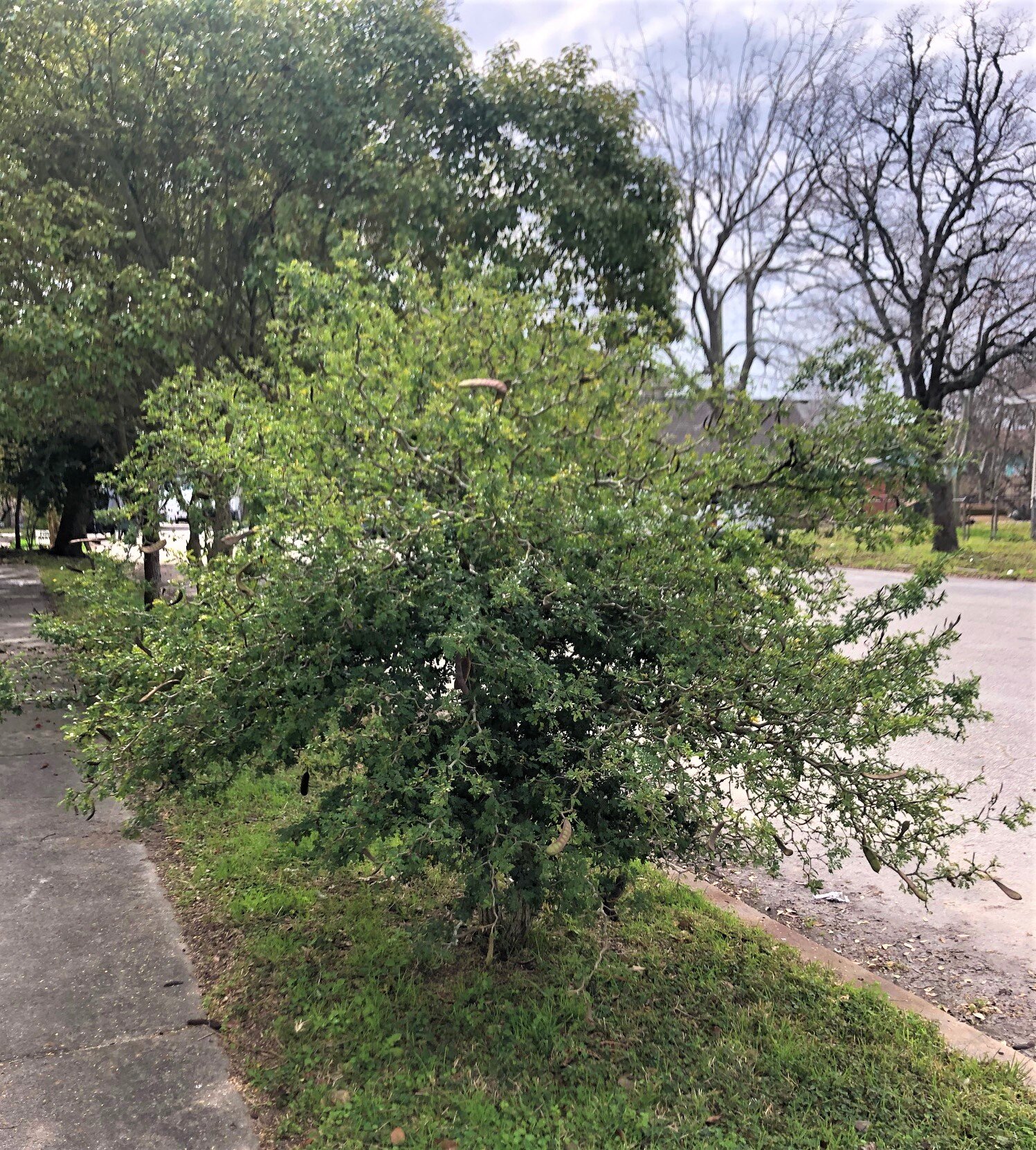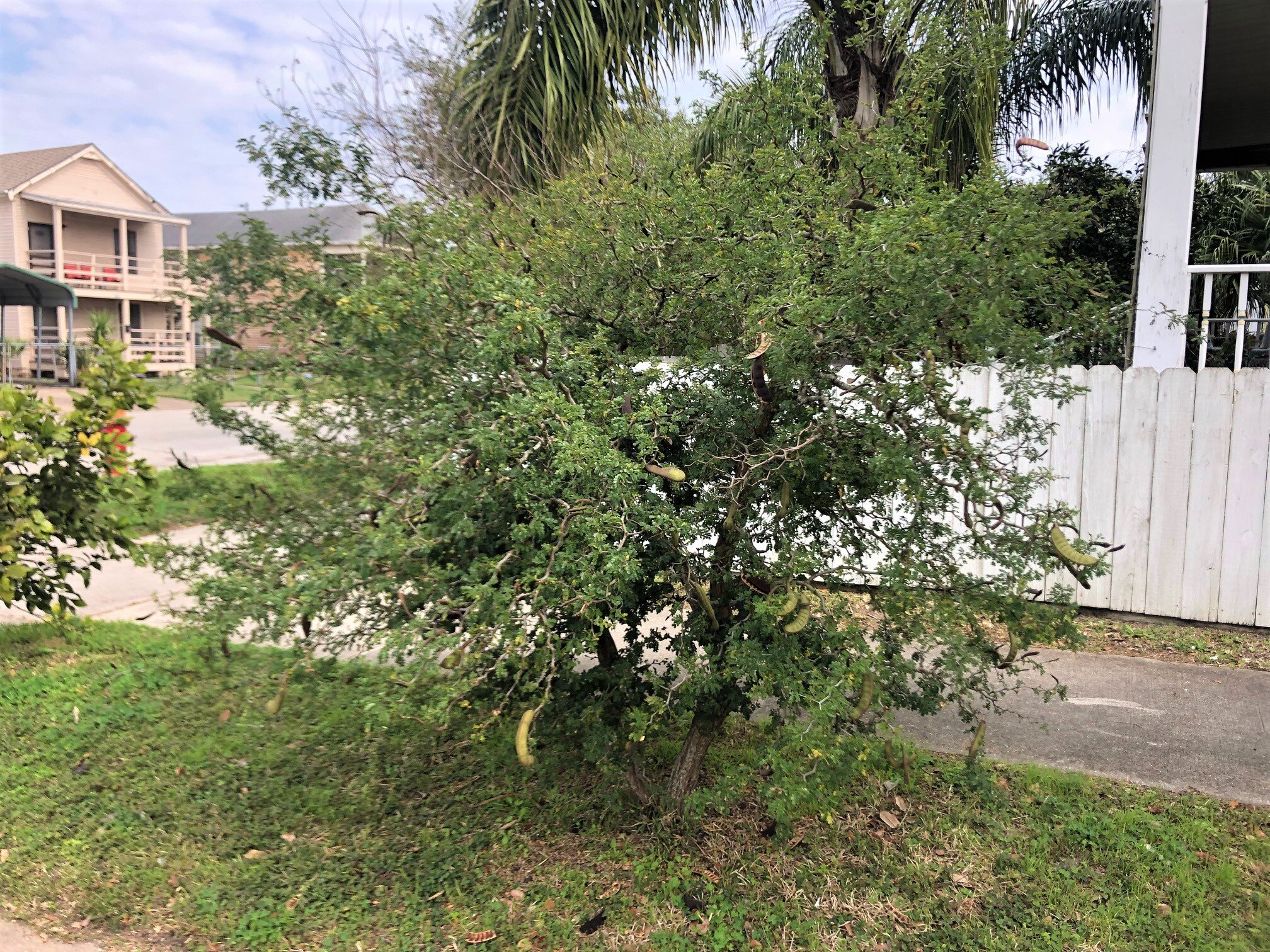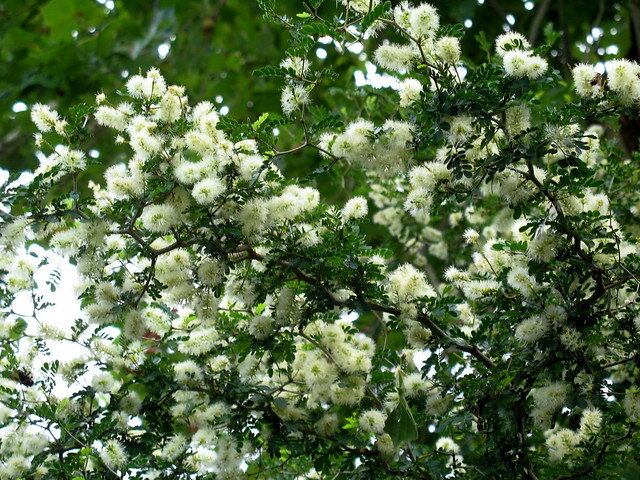Texas Ebony
TREE STORIES A Truly Tough Tree: Texas Ebony
Galveston Island Tree Conservancy is preparing for the eighth Neighborwoods streetside planting in March. Because of the survival of a number of Texas Ebony trees (Ebenopsis ebano) that laughed at Hurricane Ike’s devastating saltwater inundation, approximately 50 have since been included in Neighborwood events.
This native Texan is usually found in southern Texas but its growth requirements make it well-suited to Galveston.
Texas Ebony is often seen as a large thorny shrub or small tree with glossy, dark green foliage. Under ideal conditions it can reach 30 feet tall or more. Growth rate is slow initially but will speed up some once established. Leathery evergreen leaflets on dense spreading branches form a rounded leafy crown that provides heavy shade when full grown. Often multi-trunked, the tree might look brushy until older or pruned appropriately.
Spikes of fragrant creamy white blossoms appear sporadically from late spring through fall. These are followed by attractive 4-6 inch dark brown seed pods that remain on the branches until after the next flowering season. Bark is gray, turning very dark black and rough with age.
Growth requirements of this Ebony seem ideal for the Island. It loves our sunny days. It tolerates almost all soil conditions from deep, well-drained soil types to heavy clay, including compacted soils. The high drought tolerance of this tree make it popular for Xeriscaping; overwatering can cause damage. It can take high wind. It can thrive in small spaces and with proper pruning the canopy can be raised to form a patio tree. Altogether these form an impressive list. There are negatives of course. One is susceptibility to freeze damage which of late is a less likely problem on the Island. The presence of thorny branches requires caution and protective clothing when planting and pruning. Those thorns can provide security where needed, but for patios and gardens, they must be taken into account in tree placement.
The wood of Texas Ebony is heavy, hard, close-grained, dark red-brown tinged with purple. It is highly valued for cabinet work and is used for practically indestructible fence posts. Seeds can be roasted and eaten, or polished and strung into jewelry. Wildlife enjoys the plant as well. It is a butterfly attractor and a larval host for several species. Birds enjoy the fruit and seeds.
Texas Ebony can be a lovely addition your yard or streetscape. This tree is tough as nails and perfect for the appropriate site. You won’t be able to get one through Neighborwoods though, because our many A&M student volunteers do much of the planting and don’t always take the time to be properly cautious of the thorny branches. It is best for a careful gardener or professional to do the planting.
Drive down Ball Street between 10th & 12th and after you see the row of them by the schoolyard you will begin to recognize them around town. Plants are available through area native plant nurseries and we hope to see more on the Island in coming years.
“Tree Stories” is an ongoing series of articles about Island trees, tree care, and tree issues. If you have or know of a special tree on Galveston Island that should be highlighted, please email treesforgalveston@gmail.com. Margaret Canavan is a Galveston resident, a Galveston County Master Gardener, and a member of the Galveston Island Tree Conservancy Board.
Hurricane Ike caused the loss of 40,000 trees on Galveston Island. The Galveston Island Tree Conservancy was formed to address that loss and has replaced over 15,000 through grant-funded plantings and giveaways.




